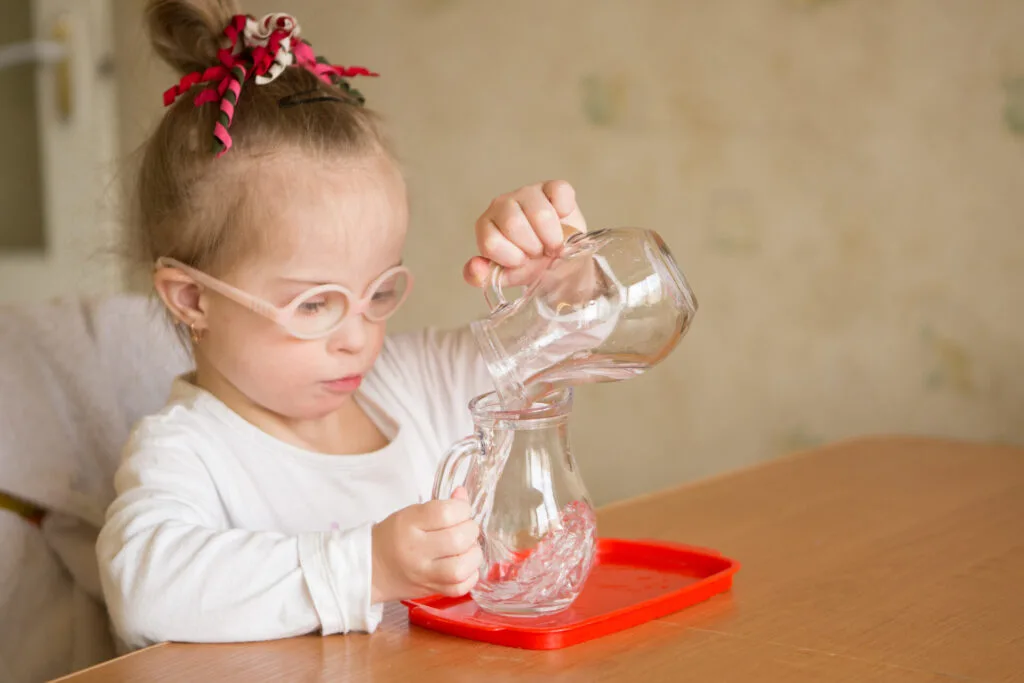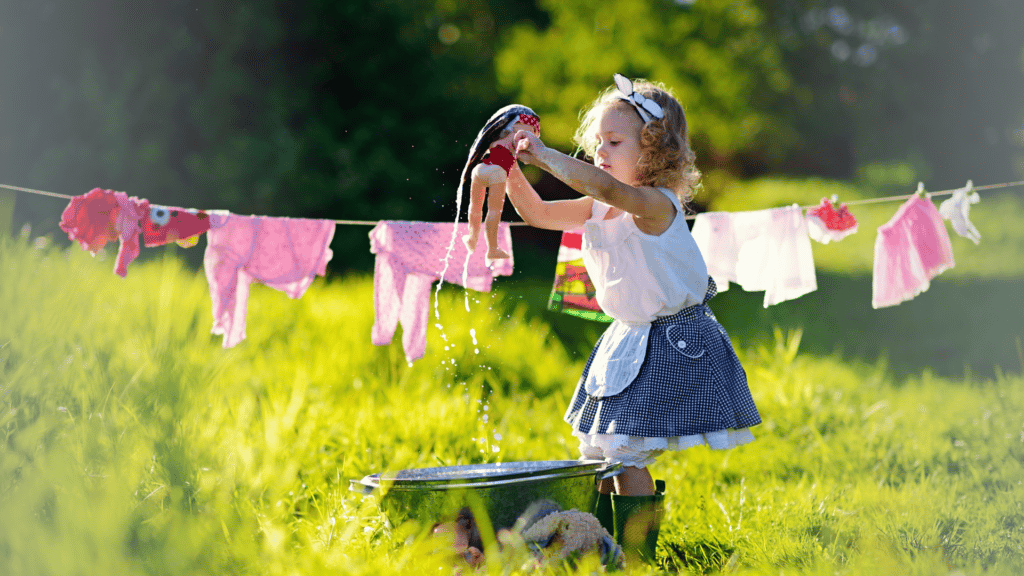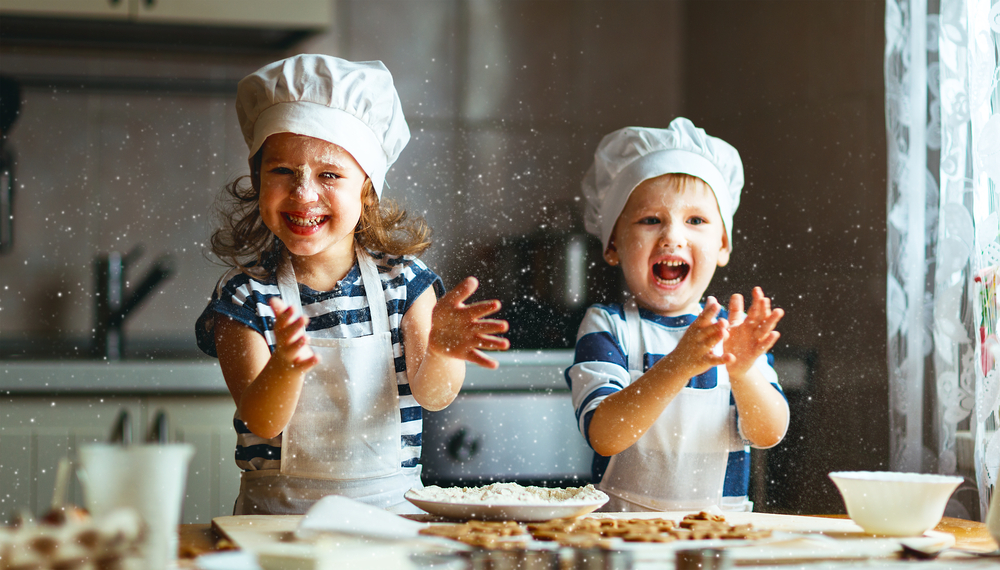Montessori Programes
Top 10 Montessori Activities For 2-Year-Olds
As parents, we all want what’s best for our children. We want them to grow up to be happy, healthy, and successful individuals. One way to ensure that your child has a strong foundation for success is to introduce them to the Montessori method of learning. The Montessori method is a child-centered approach to education that emphasizes independence, freedom within limits, and respect for a child’s natural development. It is a philosophy that was developed by Dr. Maria Montessori, an Italian physician, and educator, in the early 1900s.
One of the key aspects of the Montessori method is the use of hands-on activities to help children learn and develop. These activities are designed to be engaging, fun, and educational. Here are 11 Montessori activities that are perfect for 2-year-olds.

1. Walk the Line
The Walk the Line activity is a well-known Montessori classroom exercise that can be effortlessly customized for home use. It is categorized as a Practical Life activity and can also be considered as part of the Music and Movement domain of the Montessori curriculum. To perform this activity, you only require a clear space, either inside or outside, and some masking tape. Create a large semi-circle on the ground using the tape and let your 2-year-old walk along the line. To enhance the activity’s Music and Movement aspect, play some music in the background.
This activity is advantageous in numerous ways. Walking on the line fosters the development of balance, coordination, and concentration. It also motivates children to follow rules and become more self-reliant. When children engage in walking the line, they learn to manage their movements and pay keen attention to their surroundings.
This activity enhances their spatial awareness and boosts their overall coordination. Toddlers must concentrate on their movements and adhere to rules such as staying on the line.
2. Pouring water
Pouring water as a Montessori Practical Life activity to a 2-year-old is a classic and effective method to promote their development. This activity involves transferring water from one container to another using a small pitcher or bottle. To begin, gather a child-sized pitcher or bottle, a child-sized glass, a tray, and a cloth or sponge. Place the items on the tray and allow your toddler to explore how to pour water from the pitcher into the cup. Inevitably, spills will occur, but your child can use a cloth to wipe it up.

It is important to use real materials, such as an actual glass, whenever possible.
Not only does pouring water help children develop fine motor skills and hand-eye coordination, but it also promotes self-correction and concentration. It allows children to practice control and precision, which are essential life skills.
In addition, pouring water is an excellent way to foster a child’s sense of independence and teach them about cause and effect. Toddlers must learn to clean up spilled water, creating a valuable life lesson.
3. Sweeping
Introducing your two-year-old to the act of sweeping can be a valuable lesson in household chores. In Montessori classrooms, it’s common to see children sweeping as a part of their daily routine. Sweeping is classified as a Practical Life activity that falls under the category of Care for the Environment. To get started, all you need is a child-sized broom.
The benefits of sweeping are numerous. Children who participate in this activity are able to develop their gross motor skills by using large, coordinated movements to clean up their space. Additionally, sweeping can foster a sense of responsibility, as well as improve coordination and spatial awareness.
By engaging in Practical Life activities, children can begin to understand cause and effect, while also experiencing a sense of accomplishment upon completing a task.
4. Color Sorting
Montessori’s sensorial exercise known as color sorting involves sorting various objects by their color. This activity can be done with a wide range of items, such as colored blocks, beads, or even paper. Numerous versions of color sorting activities can be performed using items that are easily found in your home. One of the simplest color sorting activities to introduce involves a muffin tin, colored stickers, and six different colored objects. These objects can be large craft pom poms, colored pasta, or paper circles.
Once you have gathered all the necessary materials, place a colored sticker on each opening of the muffin tin. This will signal to the toddler where to place the corresponding items of that color. You can then demonstrate the activity to the toddler.
Color sorting is a beneficial activity for children as it promotes the development of various cognitive skills such as visual perception, categorization, concentration, and sequential thinking. By sorting objects based on their color, children learn to distinguish between different hues and shades and categorize them accordingly. This helps them understand the concept of order and improves their ability to perceive visual information accurately. Moreover, color sorting also enhances the decision-making skills of children as they need to select and place objects based on their color. Such skills are essential for a child’s overall growth and development and can prove to be useful in various areas of life.
5. Hanging Up Washing
Engaging in the hanging-up washing activity is a practical and hands-on exercise that requires the toddler to hang wet clothes on a line to dry. Before they can participate in this activity, the toddler can assist in loading the washing machine and transferring the clothes into a basket. This activity is highly advantageous as it helps children to develop their fine and gross motor skills, as well as their hand-eye coordination. When engaging in this activity, toddlers make bigger movements as they reach down to collect the clothing and reach up to hang it on the line.
Furthermore, this activity stimulates the development of fine motor skills as toddlers learn to position the clothes accurately on the line and secure them with pegs. In addition to the developmental benefits, this activity also helps toddlers to involve themselves in the daily activities of their family, enabling them to better understand their family and their role within it.

6. Matching Activities
Matching activities are exercises in Montessori Sensorial that require the matching of objects based on various criteria, such as shape, color, or size. These activities can be carried out using a variety of items, such as blocks, cards, vehicles, fruits, or vegetables. It is important to use actual objects for this task. Initially, start with objects that the youngster is familiar with, such as animals, shapes, fruits, or vegetables. To introduce the concept of matching to the toddler, it is best to use two identical objects.
For this preliminary activity, put 2-3 pairs of objects in a basket to aid in matching. You can use items such as fruits (2 apples, 2 bananas, etc.), or cutlery (2 forks, 2 little spoons, 2 dessert spoons).
Matching activities enhance language development, sequential thinking, organizational and categorization abilities, as well as problem-solving skills. Additionally, matching activities establish the groundwork for later mathematical concepts.
When children match objects, they must consider the similarities and differences between them and learn to categorize them based on those criteria. This fosters the development of their visual perception and improves their ability to distinguish between objects.

7. Baking
Baking alongside a toddler in the kitchen is considered a Montessori Practical Life activity. It’s crucial to prepare the environment before involving a child in the kitchen and avoid assigning tasks that are too complex.
To bake with a toddler, gather all the necessary ingredients and place them on the counter, ideally already measured out. You can let the toddler measure once you think they are ready. The recipe can be of your choice.
The benefits of baking with a toddler are myriad. It is a multi-sensory and hands-on learning experience that enhances the development of fine and gross motor skills and hand-eye coordination. Baking also improves language development by using words that might not be used daily.
Moreover, baking allows children to practice following instructions and understand cause-and-effect relationships by observing the impact of their actions on the final product.
8. Sink or Float
“Sink or float” is a popular Montessori science experiment where kids can test if various objects sink or float when placed in water. This experiment is a fantastic way to introduce science to young toddlers as early as two years old. To conduct this experiment, you will need a bowl of water and a variety of items like blocks, rocks, beads, plastic animals, vegetables, or fruits.
Place the objects on a tray and let your child explore by putting them in the water to see if they sink or float. As your child becomes more acquainted with this activity, they can start categorizing the objects based on their sinking or floating abilities. This activity is highly beneficial for children as it introduces them to scientific concepts such as buoyancy and density.
By participating in this experiment, children can observe how different objects react when placed in water and understand why some things sink while others float.

9. Gardening or Caring For Plants
It would be challenging to locate a Montessori classroom without plants tended by the children. Gardening and plant care serve as hands-on, multi-sensory Practical Life activities. Within the Montessori environment, plant care is a vital element of the Care of Environment activity, much like sweeping. For 2-year-olds who are practicing pouring water, watering a plant provides an excellent opportunity to showcase their newly acquired skill’s alternative use. You can offer a secure plant on a tray with a watering can that’s appropriate for their size. After demonstrating the process, let the toddler try watering the plant.
Gardening is another fantastic way to immerse a toddler in nature and teach them how to care for their environment outside. You can allow the toddler to water the plants outside after you have demonstrated the process.
The benefits are immense. Teaching a two-year-old to water a plant introduces them to the concept of nurturing plants. Watering a plant helps toddlers develop their fine motor skills and hand-eye coordination.
10. Opening and Closing Containers
Engaging in the activity of opening and closing containers is a useful Practical Life skill that involves manipulating containers of different shapes and sizes. This activity can be set up conveniently with items typically found in your kitchen, such as boxes, jars, and bottles. To prepare for this activity, place three distinct containers on a tray, each with a unique opening or closing mechanism such as screw-on lids, Tupperware, or zips. You may demonstrate how each container can be opened and closed to your toddler before letting them explore the materials independently.
The benefits of this activity include the development of fine motor skills, hand-eye coordination, and problem-solving abilities. Moreover, it helps children understand the concept of cause and effect. If your toddler is unable to open or close the containers, do not be concerned. The mere act of manipulating the materials can significantly contribute to the development of their fine motor skills.
>> Read More: Top 10 Montessori Activities For 3-Year-Olds
